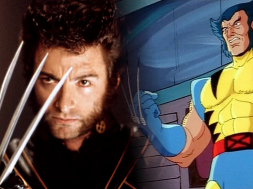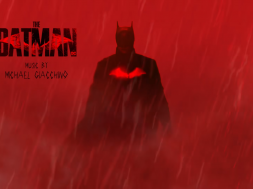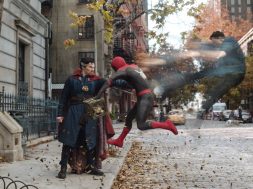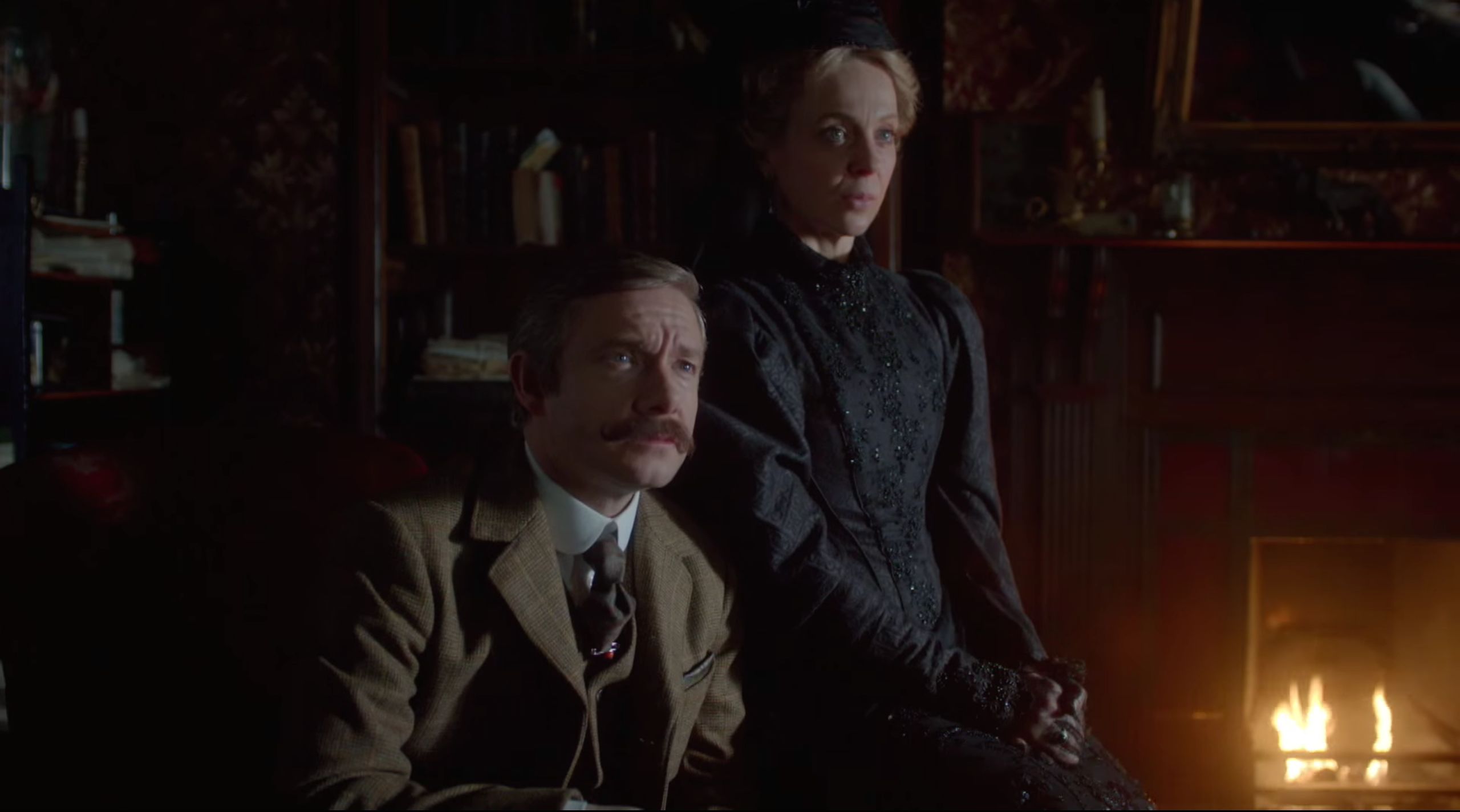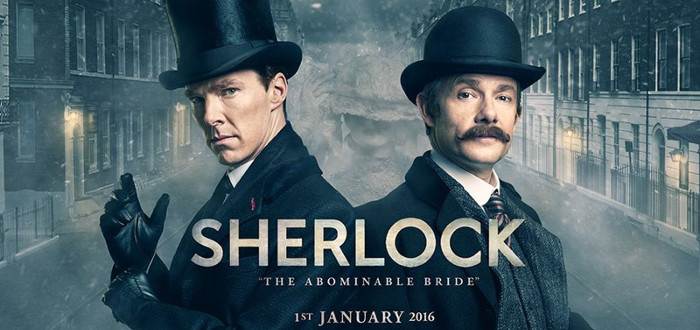
In the spirit of Doctor Who, the latest adventure of BBC’s Sherlock is a Victorian-era spinoff from the main series – a Christmas special, of sorts. Same cast, setting, tone and film-making prowess, but with Victorian London as the backdrop as opposed to modern. Though the series has become an event in the TV calendar thanks to a sporadic release schedule, ‘The Abominable Bride’ is an actual event. Still killing time until the eventual fourth season, sure, but an event nonetheless. Free from the cliffhanger of season three, ‘The Abominable Bride’ is mostly an attempt at a singular delightful adventure with another quasi-supernatural case solved by the hapless Sherlock Holmes and Doctor Watson. Mostly.
As was promoted in the lead up to the episode, Holmes and Watson are faced with a seemingly impossible case: a vengeful bride has returned from the dead to have her redemption. Together, they venture through the dimly lit, slightly gothic annals of London in an effort to trap the ghost and find out who is behind the mask. The Victorian veneer is neatly spread over the story, providing just the right balance of increased shadow and delightful dapper to the sets and costumes. Now sporting a hefty moustache, Freeman‘s Watson is still the irreplaceable muse to Cumberbatch‘s brash and unneeding Holmes, the wisp of humanity that completes his sleuthing abilities. Neither they nor their supporting cast are phased much by the timehop in setting; Rupert Graves‘ Lestrade remains in service to Holmes while Una Stubbs‘ Ms. Hudson is the chipper furniture to stretches in 221b and Amanda Abbington‘s Mary adds colour to deliberations between Watson and Holmes. Even in mannerism, the episode has been cleverly mined to avoid editing character vernacular too much, allowing for as many favored regular punchlines as possible despite the 100 year jump.
At first, the novelty of seeing the same gears turn in the period setting is gratifying, mostly because the episode begins before Holmes and Watson have met. All the beats of their original meeting and bonding are re-done under the shadows of old London, complete with dank morgue and now fitting 221b furnishings. The case is well told and unfolded – tensions rise as the impossibility increases and the gothic decoration is exploited for some lo-fi horror thrills. But then, the show asks “Miss me?”, and suddenly takes a startling alternate route, alienating itself from the Victorian setting almost altogether.
The story isn’t so much an isolated Sherlock Holmes story as much as a vehicle to explore Sherlock’s mind palace and his obsession with Moriarty, his arch-nemesis. And instead of opting to make this obvious, it’s used as a subversion of the story to try and add a profound element to Shelock’s character. Steven Moffat and Mark Gatiss, the co-writers, deliver this quandary in the second half of the episode in an effort that stands out as being a blatant effort at being clever. Instead, it reads as being caught between two ideas and sacrificing both by not picking one.
On the one hand, yes, seeing Sherlock’s mind palace in action in its magnitude does provide some added nuance, but no more than anyone had already assumed. He’s utterly brilliant and cripplingly self-obsessed in the same stead, the extension of his mental valleys can be extrapolated from the nine episodes of his deduction. On the other, and more criminally, Gatiss and Moffat undermine the tedium that makes ‘The Abominable Bride’ what it is. Suzie Lavelle‘s cinematography and Douglas Mackinnon‘s direction both swim in the eccentricities of the period décor and to have the rug ripped from under them is both unsatisfying and almost insulting to their work.
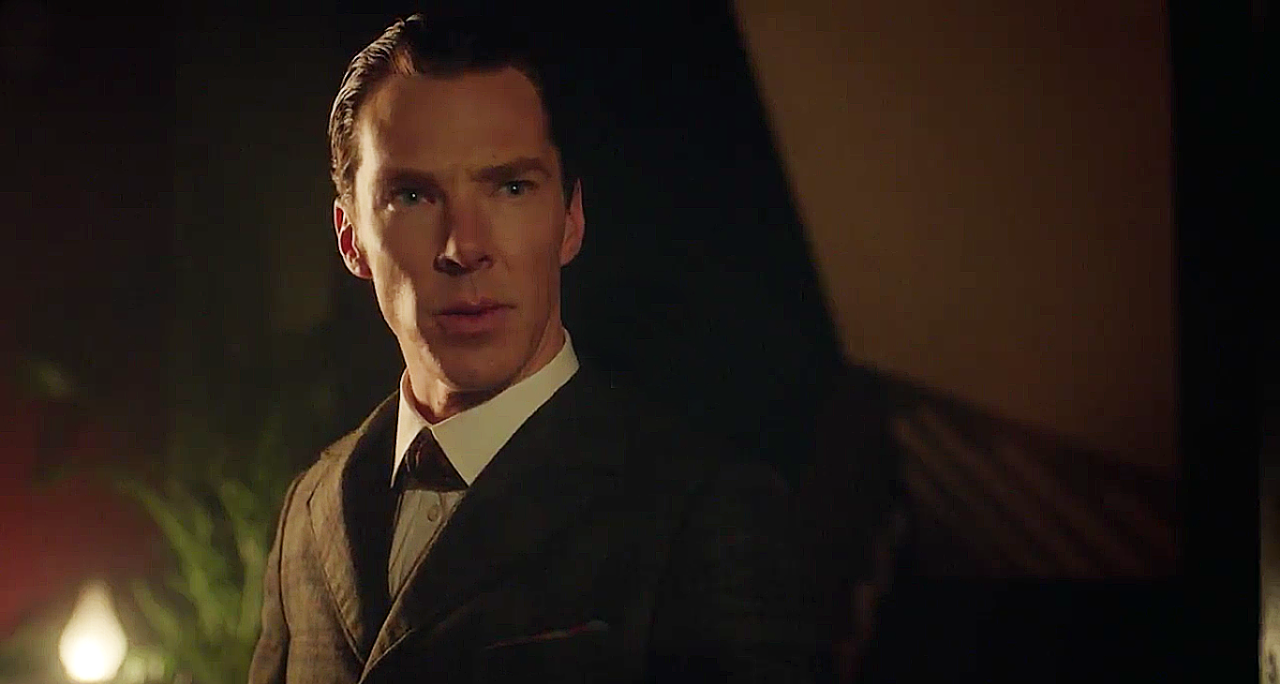 What’s worse, then, is a final act that catastrophically bounces between the two, even though we know one is inconsequential. The ideas grind and gnaw at each others’ legitimacy with neither having enough room to breathe. The climax of the case ends in a room full of cloaked suffragettes with Holmes explaining Victorian-era feminist reasoning aloud – a set-piece for which perhaps Moffat and Gatiss should have double-checked the semiotics. And this is before the episode itself ends in almost exactly the same place season three ended, not even having a distinct vantage point for all the trouble.
What’s worse, then, is a final act that catastrophically bounces between the two, even though we know one is inconsequential. The ideas grind and gnaw at each others’ legitimacy with neither having enough room to breathe. The climax of the case ends in a room full of cloaked suffragettes with Holmes explaining Victorian-era feminist reasoning aloud – a set-piece for which perhaps Moffat and Gatiss should have double-checked the semiotics. And this is before the episode itself ends in almost exactly the same place season three ended, not even having a distinct vantage point for all the trouble.
There’s obviously a great difficulty in telling an ongoing narrative with a show like Sherlock. You have to maintain viewership with only incremental story-telling and making writing like that count is a monumental task. And when it comes to the elementary idea of having a grassroots special, like this one, weighing that up against making a proper installment is a difficult choice. But it’s one that needed to be made. The siamese narrative of ‘The Abominable Bride’ is one in which both heads are cutting each other off instead of finishing each others’ sentences, resulting in a lot of noise but very little music. An unfortunate abominable bride of the series, in an of itself.
https://www.youtube.com/watch?v=93cQxkkBUfw


